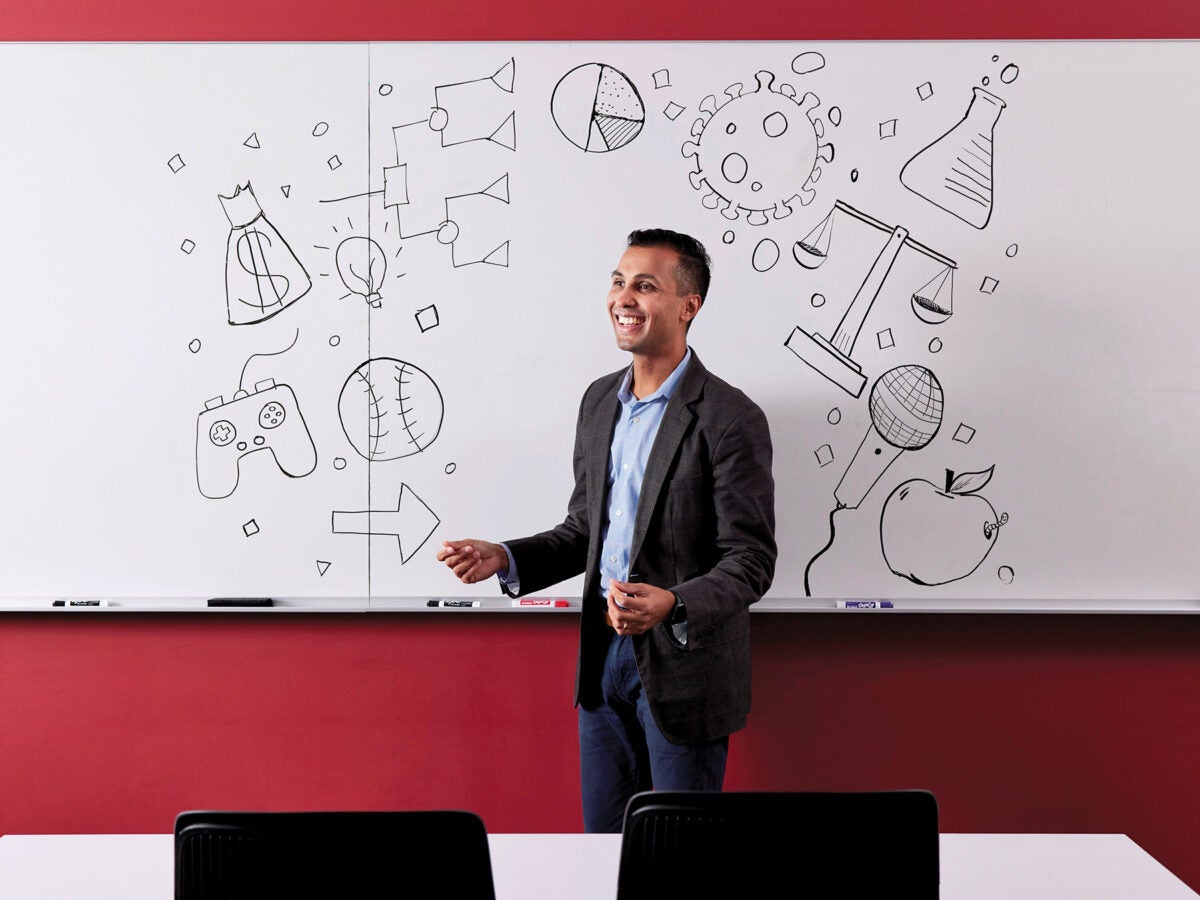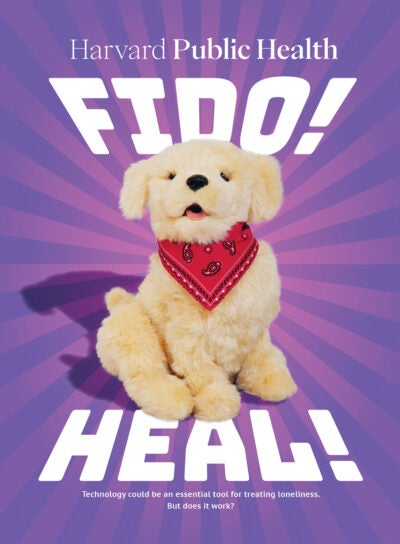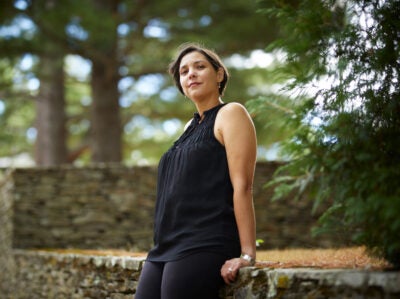
People
Q&A: Ankur Pandya on health decision science
Where are you from and what was your community like?
I was born and raised in Mount Kisco, New York, about an hour north of New York City. In a lot of ways, it was a typical American suburban experience. But I was also part of an Indian cultural community. My parents immigrated in the 1970s, at the same time as a lot of other Indians their age. I grew up around the people in that network and a lot of other first-generation kids my age.
When did you first become interested in science?
I always loved the analytic aspects of my interests. I followed professional sports and obsessed over the statistics. I was really interested in the strategy and the logic. For example, in baseball, is there an optimal way to set up your lineup or your pitching rotation? Video games were another interest that involved a lot of strategic choices based on observing patterns—sort of a basic form of decision analysis.
How did you discover that there was a scientific field with this focus?
I started out studying chemistry as an undergraduate, before moving into nutrition. Then I found myself gravitating toward health policy, which is what I did my MPH in at Yale. That was where I took my first decision science course, and I had never had a subject resonate so much.
Decision science is so logical and rational. It takes complex decisions—which can be very stressful and emotional, especially when they relate to health and money—and imposes a structure. It helps you synthesize all of the different elements and information that relate to a decision and breaks them down into solvable chunks. It was how I already thought about the world, or at least how I wanted to think about it.
“Articulating the trade-offs and lining them up alongside the benefits, the pros and cons, and the known unknowns is helpful.”
Ankur Pandya
How are you applying decision science to COVID?
I’m not an infectious disease epidemiologist, so my response early in the pandemic was to stay out of the way and signal boost my smart colleagues. But over time, as the discourse got more complicated—and heated—I started to see decision science angles. Its methods are really good at handling trade-offs, which was something I was not seeing being discussed. Instead, there were a lot of normative takes—“we must do this” or “we can’t do that.”
The perspective I co-authored [in The New England Journal of Medicine in June 2022] lays out a structured way to think about COVID response. What are the trade-offs and the points of tension? Are there metrics we could use to collapse different dimensions into one number to give us some guidance?
For example, one of the methods we use in this type of analysis is to take length of lives, quality of life, and costs, and collapse them into a single number, and then try to optimize on that number. What strategy gives us the best result? With COVID, there are a lot more dimensions that are harder to collapse, like autonomy, equity, and education. But what we argue in that paper is that you should still try to hash out the problem.
When a situation is evolving, like COVID, we try to quantify what’s called the “value of information.” If there’s something we’re uncertain about, such as the effectiveness of new boosters, how much is it worth to society to resolve all or some of that uncertainty with new research? Certainty can be one of the trade-offs.
Articulating the trade-offs and lining them up alongside the benefits, the pros and cons, and the known unknowns is helpful. Policymakers will still have to make value judgments, but having a common set of facts to look at can make the discourse more structured.
I’m also looking at ways to formally and quantitatively incorporate aspects of equity into a cost-effectiveness analysis.
For this and any other health decision science work, we’re drawing on analytical tools from a variety of fields, including business and the military. I think it’s cool that we’re able to use similar methods but with the goal of maximizing population health.
What’s been your most exciting professional accomplishment so far?
Watching my first PhD student Jinyi Zhu graduate last May. She’s now an assistant professor at Vanderbilt and a colleague, so I get to bounce ideas off her. It’s been so rewarding to watch her go through the same process I did 10 years ago and do it better.
What’s an experience that stands out from your time at Harvard Chan School as a PhD student?
I got a natural high my first time teaching introductory health decision science. I thought, if I could keep teaching these methods that I love, wouldn’t that be a really cool career?
And now you’re back as a faculty member.
It’s a dream job. I try to just be myself and appreciate how lucky I am. And to keep having fun. It wouldn’t be my dream job if I wasn’t having fun.
You won last year’s Roger L. Nichols Excellence in Teaching Award from the School. I saw that you did comedy when you were in college, so I’m curious if you think that was useful training for getting in front of a classroom.
Standing onstage with a microphone trying to make a roomful of people laugh is the most terrifying thing I’ve ever done. Compared to that, teaching is not so stressful.
But there’s a starting point that is common in both. Thinking about the sound of the room, the acoustics, and your posture, and using plain language that people will understand. The two are also related philosophically. The best laughs are the ones when the audience member makes a connection on their own. You help get them there, but then there’s something happening in their brain to make them laugh. With teaching, you’re also helping students make connections, bringing them to that aha moment.
And then, I do tend make a couple of jokes in class. I probably made too many when I started out, but now I’ve learned how to use them strategically.
You’re one of the more prolific Twitter users on the faculty. How do you approach deciding what topics to post about on your personal account?
I try to use Twitter as a tool to get people who are adjacent to health decision science to see that what we do in our somewhat niche field is relevant to what they do. Take, for example, a clinical researcher who is looking at acute stroke treatment. They might be studying a costly, risky procedure, that if it works, can really improve outcomes. Our methods could help them weigh the trade-offs.
Twitter is like a nonstop academic conference. You get to have in-depth discussions with like-minded people around the world—and crack a lot of dad jokes.
This interview has been edited and condensed.
Top photo: Ankur Pandya at the Harvard Chan School, November 2022



